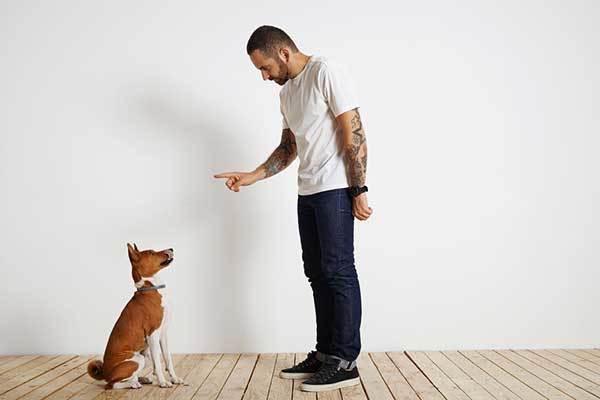“Sit” or “Down” is a command that you should teach your dog from a young age. It can be a very helpful behavior for your pup to learn.
For instance, asking your puppy to sit can help make crossing busy roads safer while teaching your pooch to sit can help stop him from jumping up on people as a way of greeting them.
Since the simple act of sitting can be a major challenge for certain dogs, especially high-energy dogs, it is important to exercise patience from the word go.
Step-By-Step Training:
These days, we teach dogs to sit on command in a series of simple steps, using food rewards, a temporary lure, and hand gestures without getting into a physical confrontation with the dog.
Teaching your dog to sit on command this way is exciting, and you and your dog will always look forward to each training session.
1- Choose the best food rewards
It is vital to use positive reinforcement while training your dog.
Training your dog this way will not only help you achieve better and faster results, it actually helps your puppy to enjoy the training sessions, which is extremely important.
Therefore, the first step to train your dog to sit on command will be to pick treats or food rewards for your dog. Get the ones that your puppy likes the most, provided they are small in size.
Let your puppy sniff the foods or treats and give him one before you get started.
At first, it is recommended to use treats or food as a reward before gradually doing away with them over time. Whatever your dog likes the most, use it.
2- Lure him in
Once you have picked the right food reward, hold it near your dog’s nose, and then move it in an arc above his head. The dog will look up to follow the smell of the reward while his bottom will touch the ground.
The moment he sits, say some kind words and offer him the treat.
Repeat this step several times during the day. As you give your dog a treat for good behavior, you’ll soon realize that he sits for a longer period of time.
3- Add a cue word
Once your dog gets a treat reward for sitting, it’s time to add a cue word. You can add the vocal cue “Sit” the moment he sits.
Remember not to say it before your puppy sits; otherwise, he may associate the reward with the wrong position. Repeat this step several times during the day.
4- Using hand gestures
As your dog masters the cue word, you can now add hand gestures so that your puppy associates the gestures with the sitting position.
The moment your dog sits down, don’t forget to give him the treats. Practice using hand gestures several times and then use the gestures without the rewards in your hands.

5- Proofing
If you are still facing problems getting your pup to sit with yummy treats, try marking their behavior. Whenever he sits naturally, praise him and give him treats while saying the cue word “sit”.
Remember to do this whenever you see your dog sitting. It is important to carry food rewards with you all the time in order to reinforce the behavior.
The moment your dog learns how to sit on command, try training him to sit in different locations with different distraction levels. This is known as proofing.
Conclusion
Keep in mind that training is an ongoing process. It is something that you should work on each day; otherwise they are likely to forget the skills they have already mastered.
If you’re still having trouble teaching your dog to sit on cue or want help with any other aspect of dog training, I’d gladly recommend the amazing Doggy Dan Online Dog Trainer program. With this course, you’ll enjoy instant access to over 250 cool videos and training material.
You can go through the dog training at your own and your puppy’s pace, and ensure you have a well-behaved dog.
This training course looks at all aspects of your dog’s life, through regular dog training and care at every stage of his life.
So, don’t hesitate anymore…learn how to have a well-behaved dog now with Doggy Dan the Online Dog Trainer.


